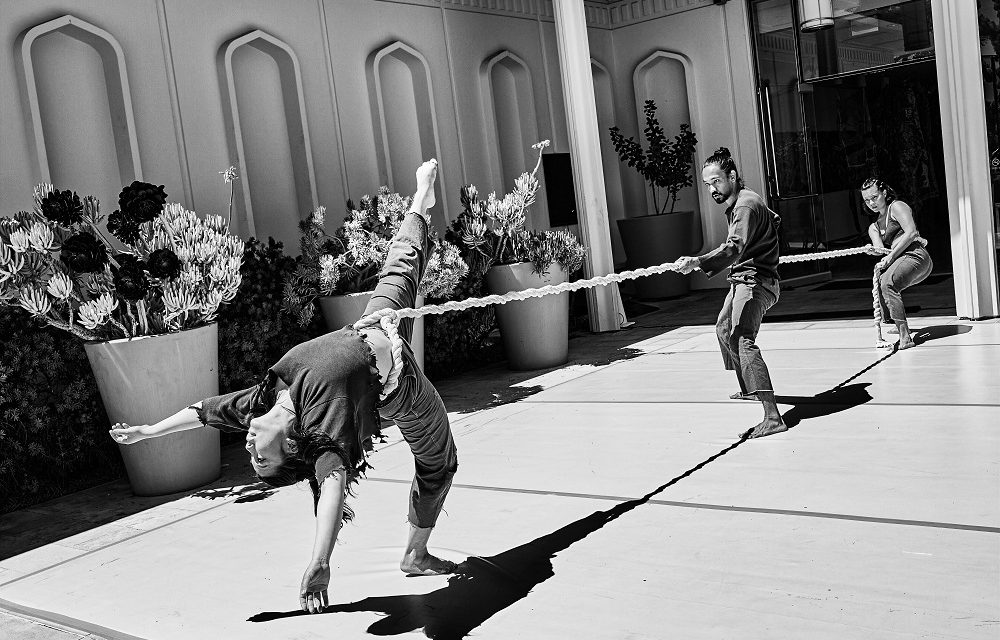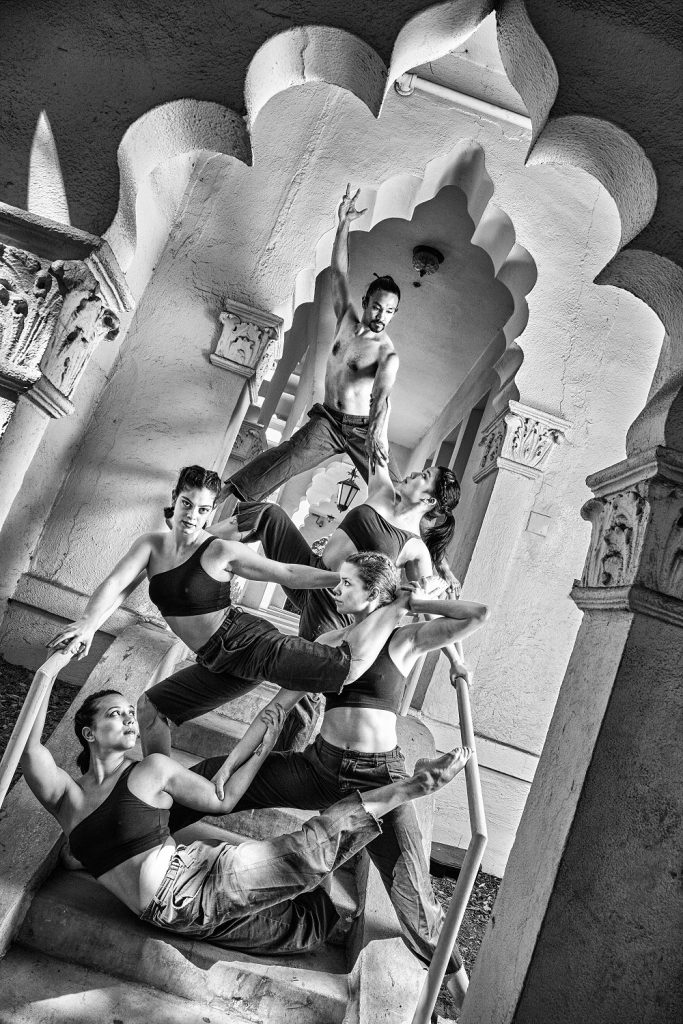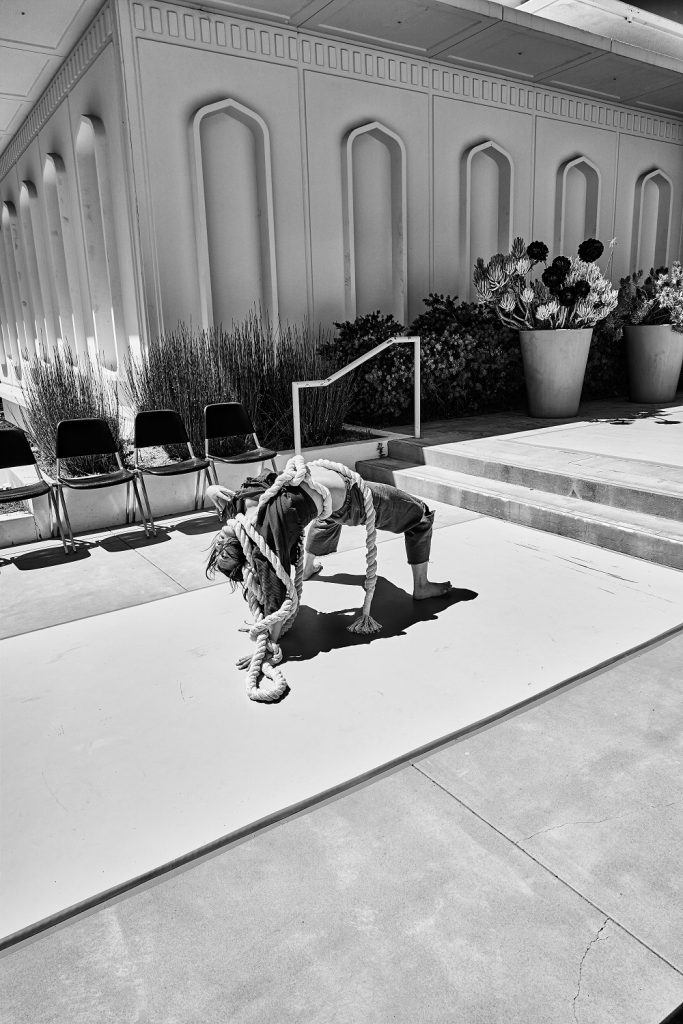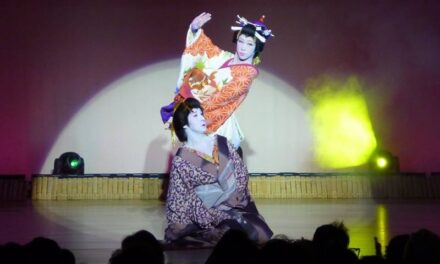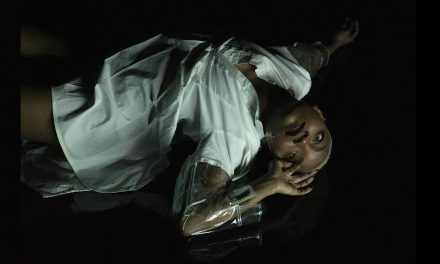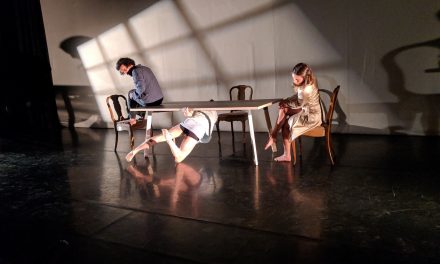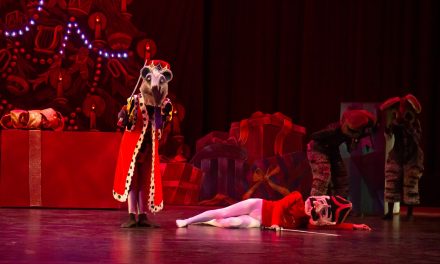Last Sunday, Pyschopomp Dance Theater performed their hour-long work entitled names at The Brand Library as part of the Brand Associates Dance Series. The series is curated by choreographer, teacher, and producer Jamie Nichols, who brings in performers from across southern California for a chance to showcase their site specific works around The Brand Library and Art Center. Sitting at the base of the Verdugo Mountains in Glendale, it is impossible to not gawk at the beautiful influence in Spanish architecture and East Indian design. Sitting outside near the pavilion’s north entrance, I can hear insects buzzing with the onset of allergy season, hummingbirds duck and dive, and the sun beating down as it sets in the west. I had almost forgotten how important it is to bring art outside and share it with the infinite life beyond a staging theater.
Nichols settled the audience into a fairly quiet hush, as she introduced Pyschopomp, and explained the Brand Associates Dance Series and the importance of free art, free education, and The Brand Library’s excellence in keeping both of these available to the residents of Los Angeles and beyond. A marley floor, an incredibly simple and effective contribution for dancers performing anywhere, had been laid out and taped down on the multilevel steps in front of the audience, and a narrow pathway in the middle created an aisle for the dancers to walk in and out of. As the piece began, performers Abby Chuah and Andrew Corpuz pulled a long and thick braided rope down the aisle to the stage with aggression and strength. On the other end was performer Mizuki Sako who had the rope wrapped around her waist as a form of enslavement and bondage. The three began a tangled web of exploration using the rope as grounding symbolism for oppression and conflict. With director and choreographer Shenandoah Harris, alongside production designer Ryan Howard, the dance artists created a moody atmosphere of fight or flight; a universal feeling to any human being. Sako unraveled herself, only to re-ravel into the length of heavy rope, feeling tied down, and yet knowing she can also untie herself. With visceral and physical floor work, both Corpuz and Chuah worked together to keep Sako punished and trapped in, perhaps her own idea, that she is not worthy of redemption or freedom…not even from herself.
Inspired by the biblical story of Shemot or the Exodus story, we saw performer Stephanie Mizrahi enter from the glass double door entrance of the building, holding a shallow bowl of water, and offering it to the exhausted Sako. Creating a duet, you can feel Sako letting go of the rope, and symbolically letting go of that which no longer served her. It almost felt as though Mizrahi was relieved to find someone else who’d probably gone through the same thing she had been through, which was demonstrated by a thinner and deconstructed rope around her own waist. While the two displayed impressive contact improvisation, I did feel as though the two sections were of the same tone. I kept waiting for a new pace, a change of tempo, or emotional levity. The two were then joined by performer Lydia McDonald who also displayed the same coloring in costume as Mizrahi with soft reds and copper neutrals. The piece ended with both Chuah and Corpuz coming back to the three women to restrain and kick down, only to find themselves entangled in the rope they meant to entrap. Too busy blaming one another for their own unhappiness, they caught themselves unable to get free from the burden of the thick cords and succumbing to ruin.
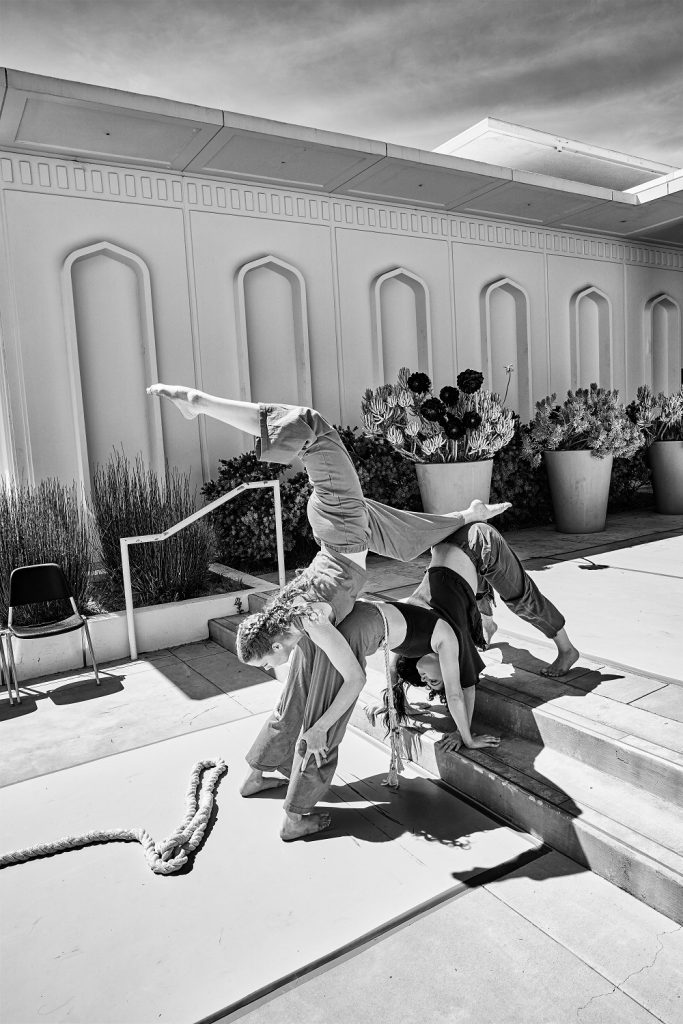
Psychopomp Dance Company – Lydia Mcdonald, Stephanie Mizrahi, Mizuki Sako in “names” – Photo by George Simian
While Pyschopomp rocked impressive floorwork, and intuitive choreography, it was their message and mission that truly captured the audience. Afterwards Harris took charge of the microphone to introduce the dancers and take comments and questions. She wanted to hear what you took away, what you liked, what you did not like, what was confusing, and what was meaningful in your own interpretation. She opened the floor to questions so you could better understand the process, the decisions, the work, and how it all fits into the life of a working dancer. While the piece itself was significant, it was the transparency Harris and Jamie Nichols opened up that truly impressed. So many different people with different backgrounds come to see dance, and Harris wanted to make sure nobody walked away feeling as though the art of dance is a mysterious nonverbal fine art that you’re not supposed to “get.” She wanted to make sure everyone knew that dance is meant to be shared, supported, and enjoyed by all. Wherever Pyschopomp performs, you can be sure redemption follows.
For more information about Pyschopomp Dance Theater, please visit their website.
For more information about the Brand Associates Dance Series, please visit their website.
Written by Grace Courvoisier for LA Dance Chronicle.
Featured image: Psychopomp Dance Theater in names – Photo by George Simian

